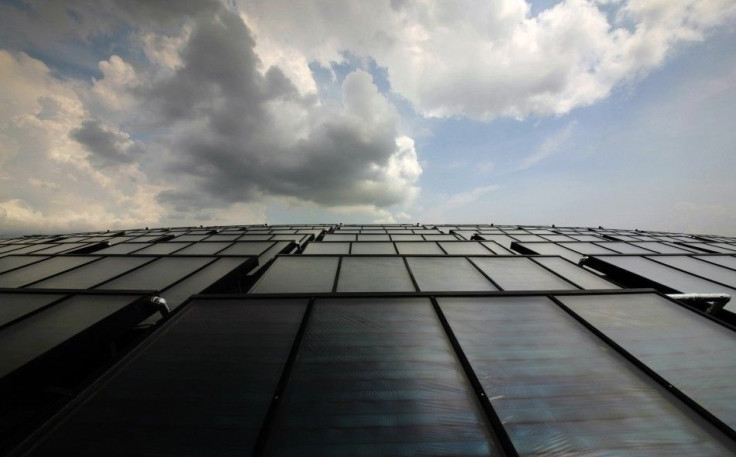US Clean Energy Sector May Lose 500,000 Jobs By June Without Federal Aid

KEY POINTS
- U.S. clean energy industry lost 106,000 jobs in the month of March alone
- By June the clean energy sector may lose up to 500,000 jobs
- At the end of 2019, the sector employed almost 3.4 million people
The coronavirus crisis is cutting a savage swath through the U.S. clean energy industry – some 106,000 jobs in the sector vanished in the month of March alone as demand evaporated amid nationwide stay-at-home orders
Moreover, that one-month job loss was greater than what the industry gained in jobs in all of 2019.
By June of this year, the clean energy sector may lose up to 500,000 jobs – or 15% of the country’s entire clean energy workforce -- according to a study by clean energy advocacy group E2 (Environmental Entrepreneurs), in cooperation with the American Council on Renewable Energy, E4TheFuture and BW Research Partnership.
The March job cuts were heavily concentrated in only three sub-sectors of clean energy: energy efficiency (69,800 jobs lost); renewable energy (16,500 jobs); and clean vehicles (12,300 jobs). Many of these ex-employees worked as electricians, heating, ventilation, and air conditioning technicians, construction workers; solar installers; wind industry engineers and technicians.
March represented a dramatic setback for the U.S. clean energy industry –at the end of 2019, the sector employed almost 3.4 million people. In that year, clean energy accounted for more than half of job growth in the entire energy sector – employing almost three times as many people as the fossil fuel industry.
“By comparison, only about 50,000 people work in the coal industry in America and about 145,000 work in oil and gas extraction,” said Bob Keefe, executive director of E2. “Imagine how quickly the White House would be moving [if] about 50,000 coal workers and all those petroleum workers were suddenly out of a job.”
Now, without government aid, clean energy is facing a daunting crisis.
“Clean energy workers are a huge and important part of America’s workforce – and they are hurting badly,” said Keefe. “Lawmakers simply cannot ignore the millions of electricians, technicians and factory workers who work in clean energy as they consider ongoing economic recovery efforts – especially since we know from our country’s last economic meltdown that clean energy can lead the way to recovery.”
Gregory Wetstone, president and CEO of the American Council on Renewable Energy, said to help the renewable energy workforce, the government should, among other things, “extend the time-sensitive deadlines faced by renewable projects seeking to qualify for critical tax incentives, and to provide temporary refundability for renewable tax credits that are increasingly difficult to monetize.”
Phil Jordan, vice president and principal at BW Research Partnership, called the economic fallout from the virus as “historic in both size and speed.”
“Activities across the entire range of clean energy activities, from manufacturing electric vehicles to installing solar panels, are being impacted,” Jordan said. “And the data pretty clearly indicate that this is just the beginning.”
Steve Nadel, executive director, American Council for an Energy-Efficient Economy, similarly warned that worse is yet to come.
“From contractors who can’t go into homes to weatherize them to employees in shut-down electric car factories, energy efficiency workers have lost their jobs – and that costs all of us,” he said. “Consumers lose out on utility bill savings, and the country curtails a critical tool for slashing greenhouse gas emissions.”
The job losses have spread across the country.
Emily Rice, chief operating officer of The Energy Group in Des Moines, Iowa, said her company’s projects are postponed because workers can’t access buildings.
“This is impacting cash flow and we are potentially going to face layoffs,” she said. “We are working to avoid that, and it will depend on the duration of this disruption. Capital investments will stall as businesses recover which is going to delay or indefinitely postpone energy-saving building improvements or construction.”
Lloyd Kass, vice president of policy and business development at Lime Energy in Newark, N.J., said business has come to a complete halt.
“And if the shutdown continues, we will be forced to furlough or lay off much of our workforce,” he said. “We have 300 direct employees at Lime, two thirds of which are salespeople, energy auditors and field technicians and inspectors. The work our teams generate feeds an ecosystem of supply chain partners and skilled trade contractors who together dedicate a work force in excess of 5,000 skilled and unskilled laborers providing the material and installation services that get these projects done. No one has revenue generating work to do at the moment.”
Greg Smith, CEO of Energy Optimizers USA in Dayton, Ohio, said his firm has already cut 25% of its workforce, while more than $10 million in projects have stalled.
Mark Hall, founder of Revalue.io in Oakland, Calif., said five residential retrofit projects have been halted.
“During this economic downturn, our ability to reach our customers, initiate new contracts and service existing projects has been critically altered,” he said.
Jordan Ramer, CEO of EVConnect in El Segundo, Calif., said his company is witnessing a slowing sales cycle and initiated a hiring freeze.
“Projects are definitely slowing and it is increasingly difficult to get projects started or moving forward because permits are harder to get and people are less likely to want to visit sites,” he said.
https://earther.gizmodo.com/the-us-lost-more-than-100-000-clean-energy-jobs-in-marc-1842886956
Keefe again urged the federal government to step in.
“Lawmakers don’t have to sit back and watch clean energy crumble and its 3.4 million workers suffer,” Keefe wrote. “They should heed the warning signs and act quickly and decisively with policies that can stem the losses."
© Copyright IBTimes 2025. All rights reserved.





















